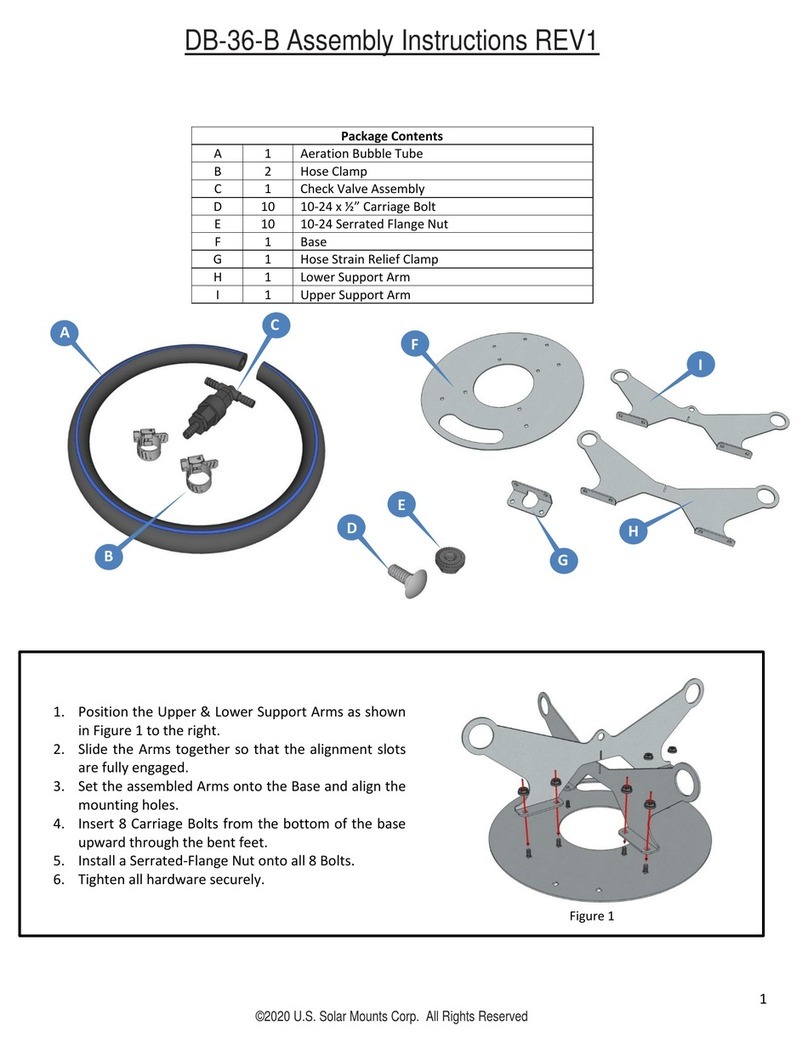3
1.
Installer Responsibility
The installer is solely responsible for:
•
Complying with all applicable local or national building codes, including any that may
supersede this manual.
•
Ensure that U.S. Solar Mounts and other products are appropriate for the particular
installationandtheinstallationenvironment.
•
Ensure that the selected mount can support the array under live load conditions.
•
Use only U.S. Solar Mounts parts and installer-supplied parts as specified by U.S.
Solar Mounts. Substitution parts may void the warranty.
•
Ensure proper array/structure grounding
, including each module frame, the mounting
pole and each rail. Failure to provide proper grounding may result in damage to your
equipment or injury to personnel.
•
Do not rely on the mounting pipe to act as a ground rod!
It is not a reliable
substitute for a properly installed grounding electrode system.
•
If you are unfamiliar
with NEC
compliant
solar electric installations, consult
with
the dealer
that supplied your mount. They should have the skill and expertise
to supply
you with the necessary wiring diagrams and the appropriate connection
wire, grounding
equipment,junctionboxesandfusing.




























